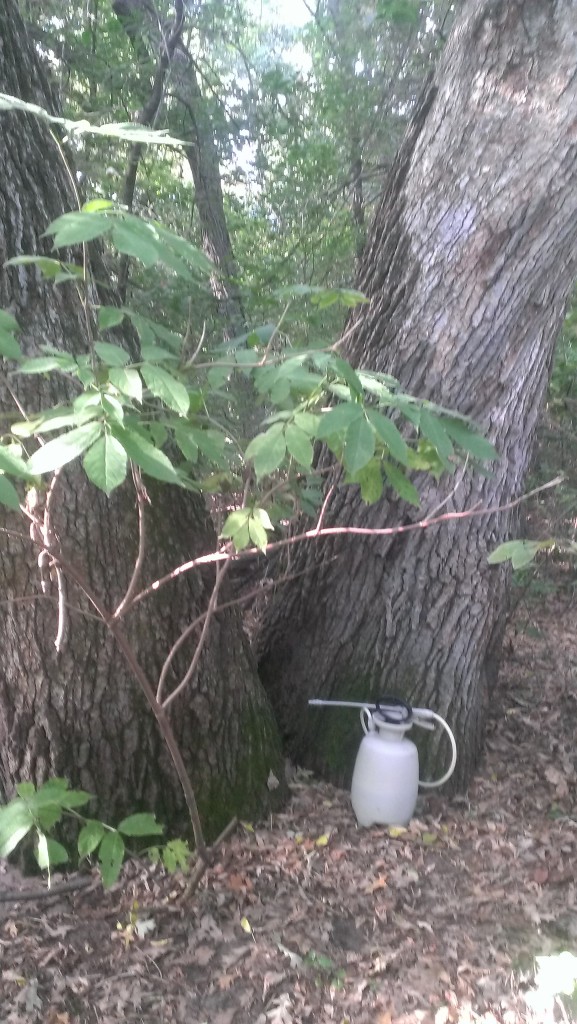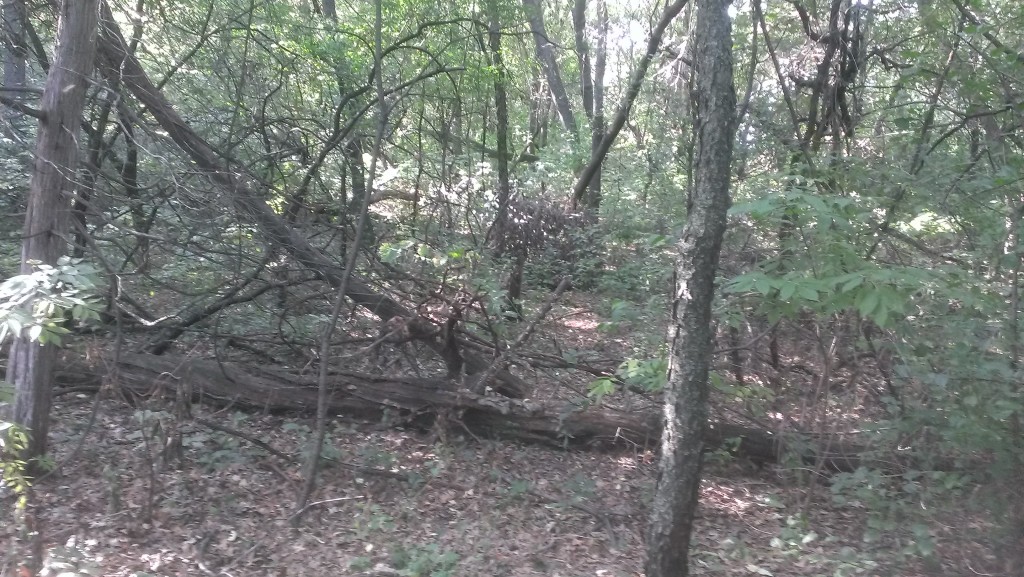Lughnasa Harvest Moon
I use herbicides sparingly, for problems I can’t eliminate by hand. Those problems include an invasion of rhizomatous creeping charlie, poison ivy and the stumps of felled trees. The creeping charlie (no relation) was a mistake on my part. I didn’t recognize it and advised Kate not to pull it when it could have been controlled. Somehow it got over a large section of ground. I sprayed it this morning.
Poison ivy. My earliest adventures with industrial strength herbicides (triclopyr) began soon after  our purchase of this property. Doing research I discovered Rhus radicans likes the ground around oaks. We have lots of oaks in our woods.
our purchase of this property. Doing research I discovered Rhus radicans likes the ground around oaks. We have lots of oaks in our woods.
My first efforts with roundup (glyphosate) had no effect. Ha, ha. Like rain water to me.
The first time I used triclopyr, as brush-be-gone, a dilute solution sold for ornery shrubs and could-be-tried as adult weeds, failed, too. Back to the research. Ah. The best time to spray them is in the fall when the plant stores energy in its roots for the coming winter season.
(Gog and Magog)
Today (it’s fall, you may notice) I sprayed the creeping charlie because of this information. I also went hunting poison ivy. I’ve been after it off and on for 15 years. This year I had trouble finding any. A good sign. The ones I did find I coated leaves and stems. The word on triclopyr is that it vanishes after three months in the soil. You don’t want to use it around things you want because it’s effective.
Last I’ll use it on stumps. The problem with stumps, especially ash and black locust is  that the tree immediately sends up new treelets to replace the missing one. Unless you grind the stumps, which I no longer do, you’ll have a clump of new trees instead of an eliminated old one. I don’t cut down many trees, but when I do it means I have a specific purpose in mind: more sun for a growing area, more space for the bees, an area for our fire pit. New trees are not part of the plan. Using a paint brush to coat the stumps with triclopyr, a less dilute version than brush-be-gone, solves the problem.
that the tree immediately sends up new treelets to replace the missing one. Unless you grind the stumps, which I no longer do, you’ll have a clump of new trees instead of an eliminated old one. I don’t cut down many trees, but when I do it means I have a specific purpose in mind: more sun for a growing area, more space for the bees, an area for our fire pit. New trees are not part of the plan. Using a paint brush to coat the stumps with triclopyr, a less dilute version than brush-be-gone, solves the problem.
(in our woods near the big oaks, Gog and Magog)
In all cases I use integrated pest management to reduce and/or eliminate the need for pesticides. I use hand removal, physical barriers like landscape cloth and careful selection of plants to reduce the need for herbicides. I don’t like using them, but in some cases I’ve not been able to come up with other solutions.
